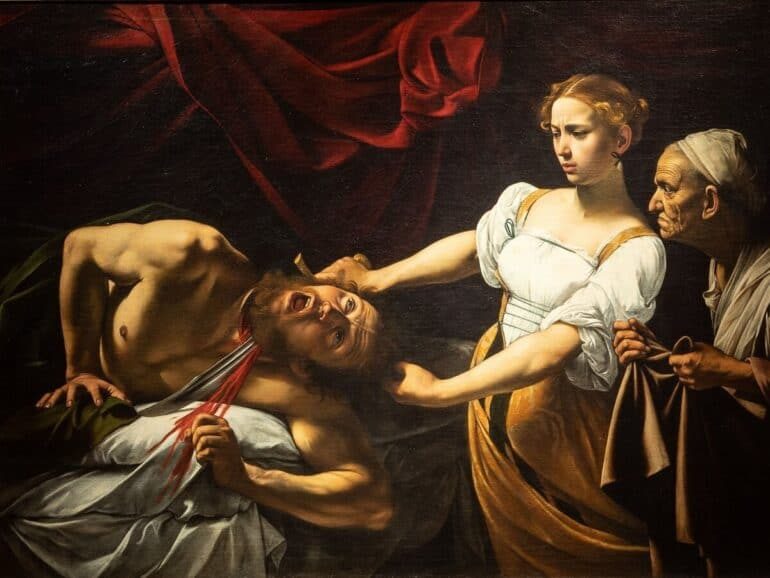Violence and Seduction in 16th and 17th century painting
Imagine entering a theater, and witnessing, as an unseen spectator, a dramatic and frightening event. Afraid, but at the same time fascinated, by the tragic spectacle that appears before you. This is the predominant feeling when visiting the Caravaggio and Artemisia exhibition: the Challenge of Judith: Violence and Seduction in 16th and 17th century painting displayed in the rooms of Palazzo Barberini until next March 27.
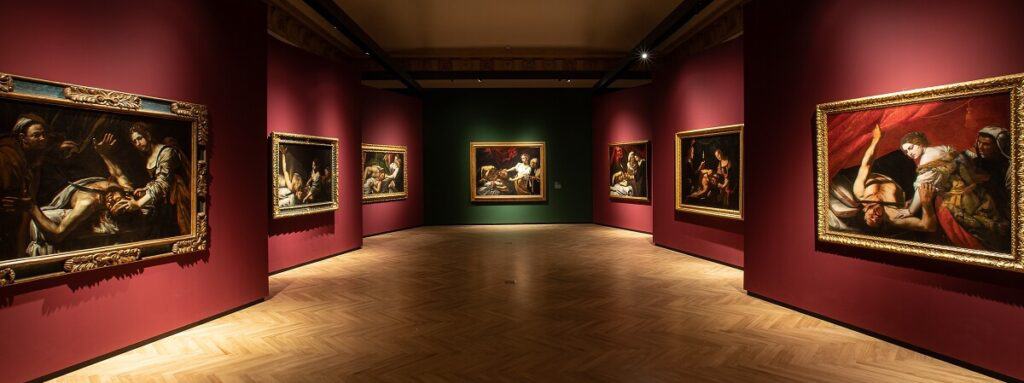
Conceived to celebrate the double anniversary of the Caravaggesque canvas this year (the seventy years since its rediscovery and the fifty years since its acquisition by the Italian State), the exhibition, also thanks to the splendid immersive setting, ensures that visitors have the sensation of being both inside the biblical scene and seeing it unfold before his eyes.
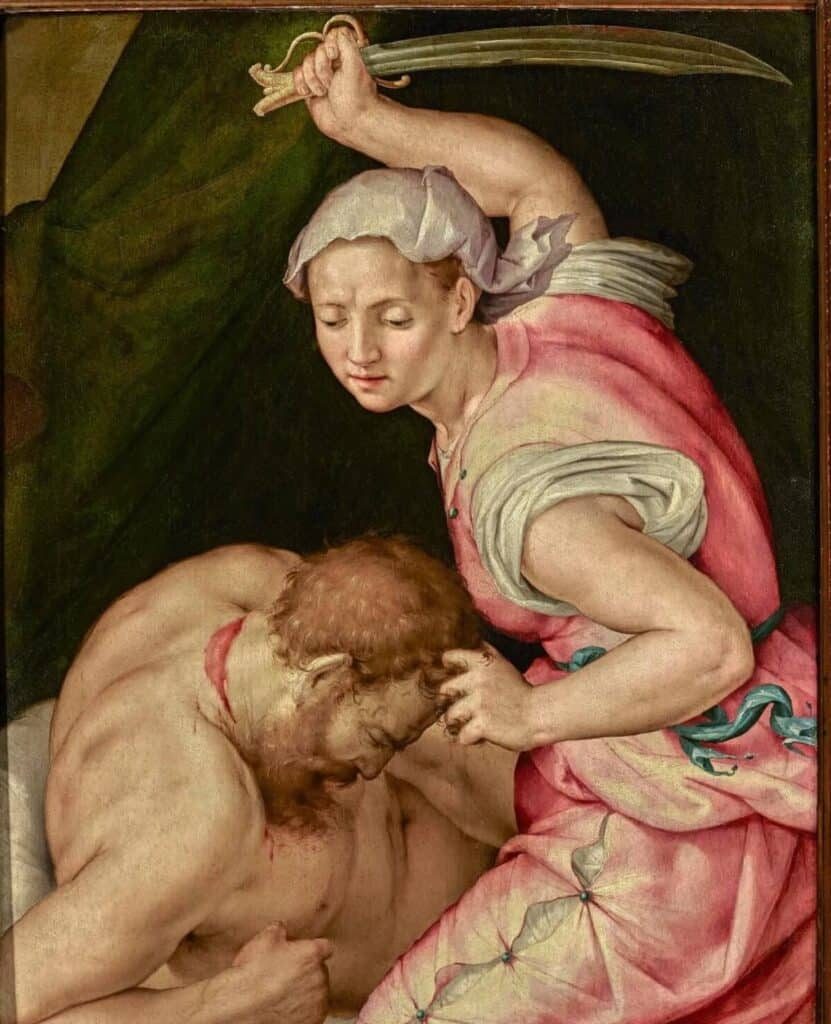
INSPIRATION
Caravaggio’s Paintings In Rome
The Exhibition Itinerary
There are 31 works in the exhibition curated by Maria Cristina Terzaghi, divided into four sections, which rotate like rays around Merisi’s masterpiece, executed in 1599 for the banker Ottavio Costa. In the first, Giuditta at the crossroads between Manner and Nature, the viewer receives a taste of how the theme began: in the sixteenth century, to be represented without filters, placing the accent on the violence of the event and the central role, on a physical and spiritual level, of the biblical heroine. Emblematic of this new uncensored iconography is undoubtedly the work of Pierfrancesco Foschi, where the iridescent pink of Judith’s dress manages to “dress” with feminine power even the quick and surgical act of beheading a helpless Holofernes.
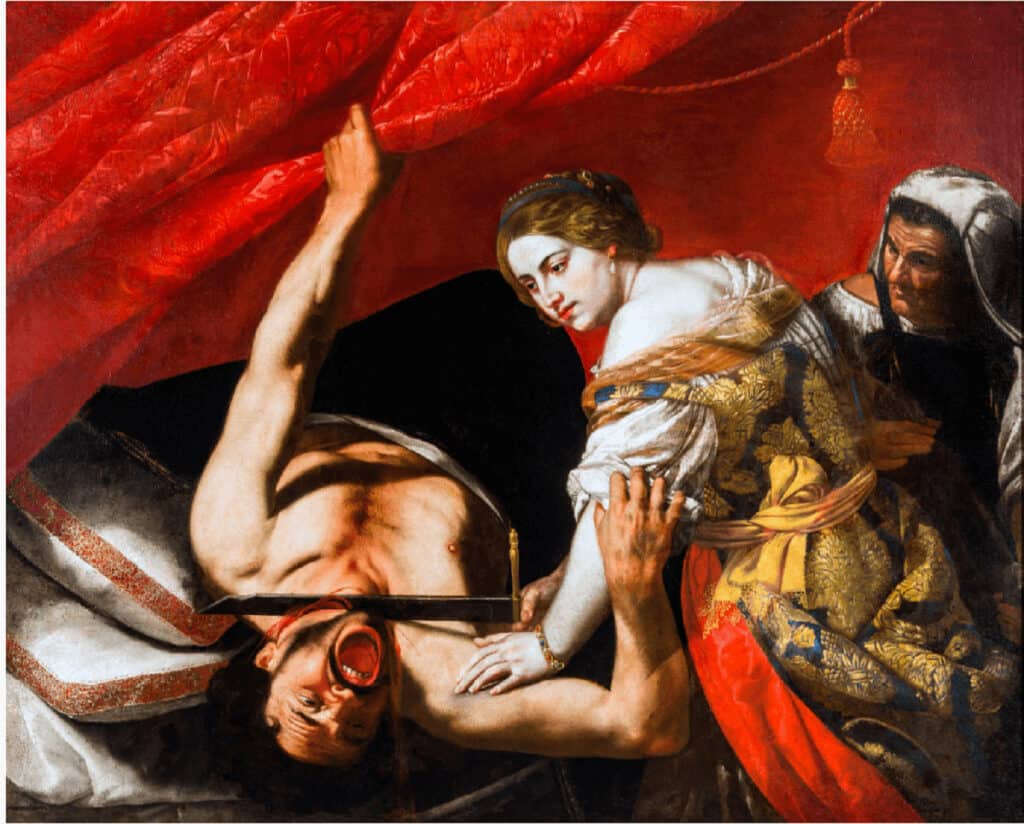
The seventeenth century and the greatest interpreters of the theme: Caravaggio and Artemisia Gentileschi
In the room of the second section, Caravaggio and his first Interpreters make us enter with all intents and purposes within the narrated scene. The circular setting allows for the event to practically come to life, second by second, as in a photographic sequence, all helped by the fact that the series of paintings changes in colors and details, but in terms of subject. A kaleidoscope with a growing pathos, which does not culminate in the final work but in the central one, namely the Judith who beheads Holofernes by Caravaggio. The way in which the painter decided to represent the theme marked a watershed with all the previous production. A still cinematic image, the inexorable stillness of advancing death, the velvet drape that reveals the victim’s fumbling between the sheets, the delicate and deadly beauty of the young army of faith in God, and the morbid curiosity of the maid. The latter seems to be a being without sex, which more than a person embodies curiosity in its darker side, turbid to the point of putting aside morality in favor of a sip of the unnameable, the unwatchable.
Even if it is said that Costa was very jealous of this canvas and did not allow anyone to see it, the works on display testify that someone managed at least to give it … a peek. Suffice it to look at the proof of Filippo Vitale, who on several points recalls the example of Merisi: the horizontal format that frames the terrible reaction of the general caught in his sleep, the mouth deformed by a mute cry that is lost in the vermilion of the curtain, the black blacker that becomes a tunnel that seems to swallow or spit out the body.
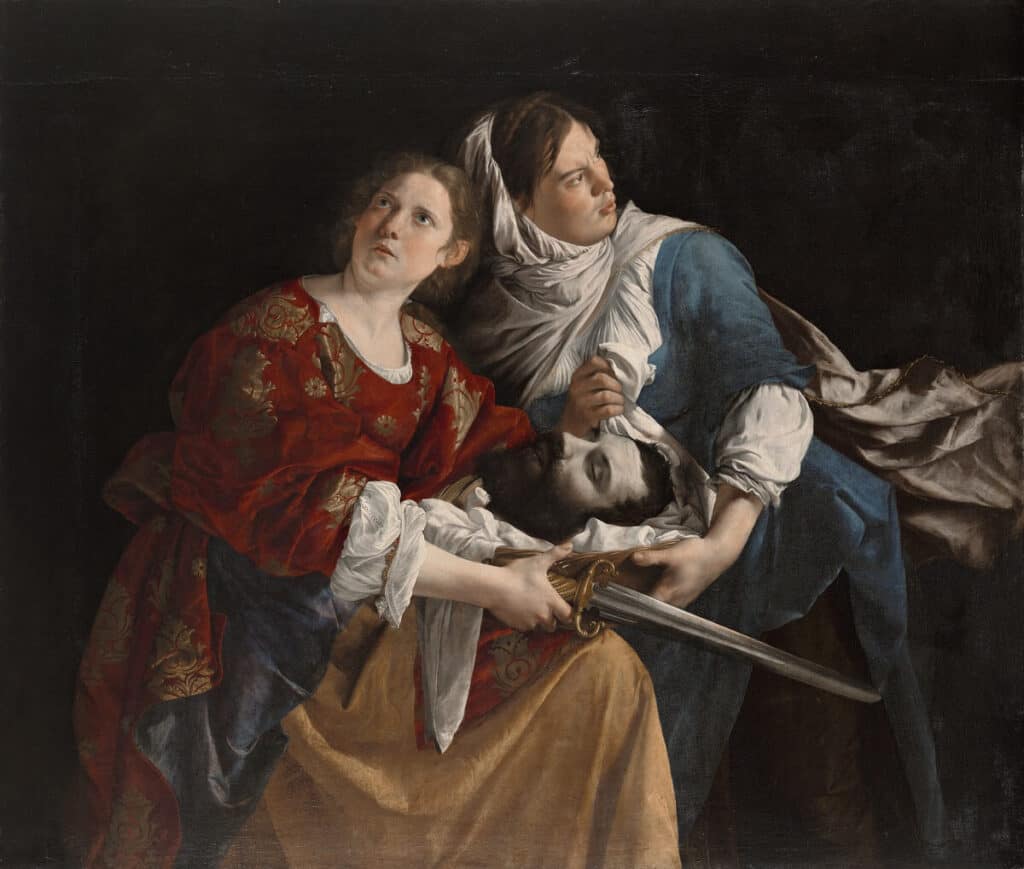
©Hartford, Wadsworth Athenaeum Museum of Art, CT. The Ella Gallup Sumner and Mary Catlyn Sumner Collection Fund
Foto: Alberto Novelli
But the hand that has most succeeded in getting closer to Caravaggio is feminine; we are talking about Artemisia Gentileschi, to whom the third section is titled: Artemisia Gentileschi and the theater of Judith. It is she, together with her father Orazio, who gives the most moving, most heartfelt pictorial version. She, who was the victim of violence never condemned by the painter Agostino Tassi, takes on the role of the female exemplum virtutis, combining talent and revenge in her interpretations, identifying herself with the heroine who punishes the tyrant, in hypnosis with a taste psychoanalytic that precedes by three centuries what we could define a reinterpretation of trauma for therapeutic purposes.
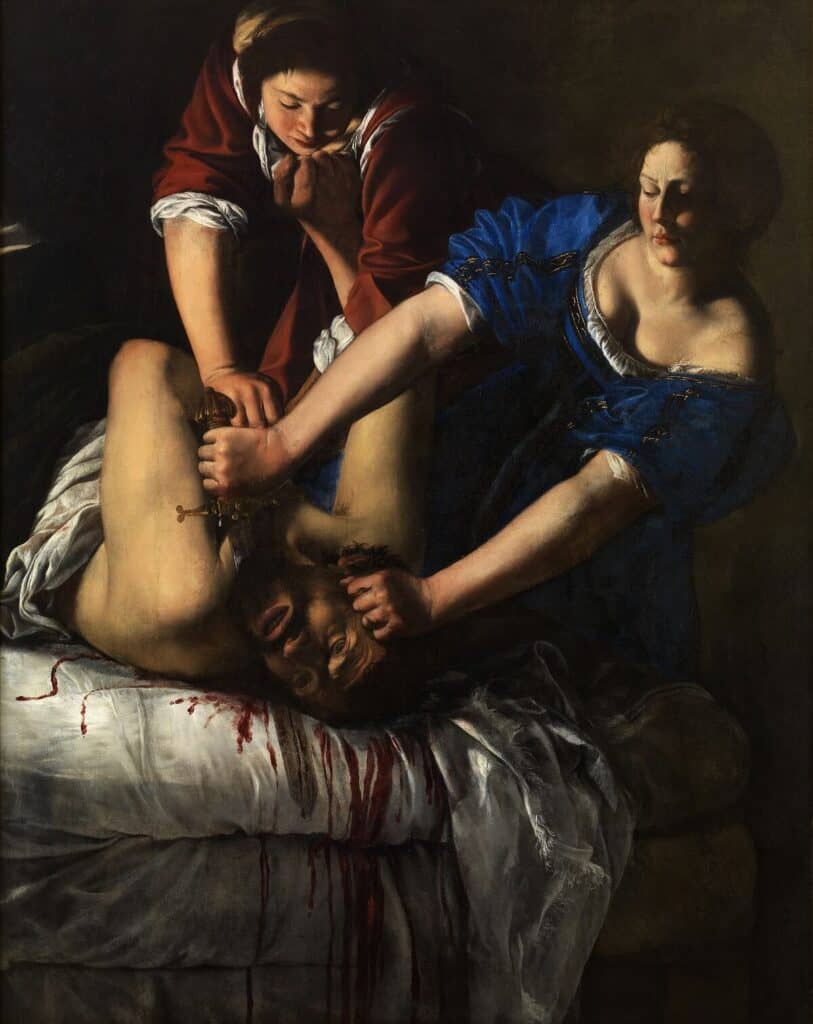
Foto: Alberto Novelli
The Giuditta section closes the path. Judith and David, Judith and Salomé, who compares the two champions of Christian virtue, Judith and David, the latter capable of killing the giant Goliath with a slingshot; both symbols of divine power acting by the hand of the chosen man or woman. They are flanked by the iconography of Salome, transversally responsible for the martyrdom of St. John the Baptist, confirming once again that seduction is, at times, the sharpest weapon.
Until March 27, 2022
National Galleries of Ancient Art – Palazzo Barberini
Via delle Quattro Fontane, 13
Tue-Sun 10 am-6pm (Last admission at 5pm)
Exhibition only: Full price € 7 – Reduced € 2 (children aged 18 to 25)
Exhibition and museum: Full price 15 € – Reduced 4 € (children aged 18 to 25)
Museum only: Full price € 12 – Reduced € 2 (children aged 18 to 25).


